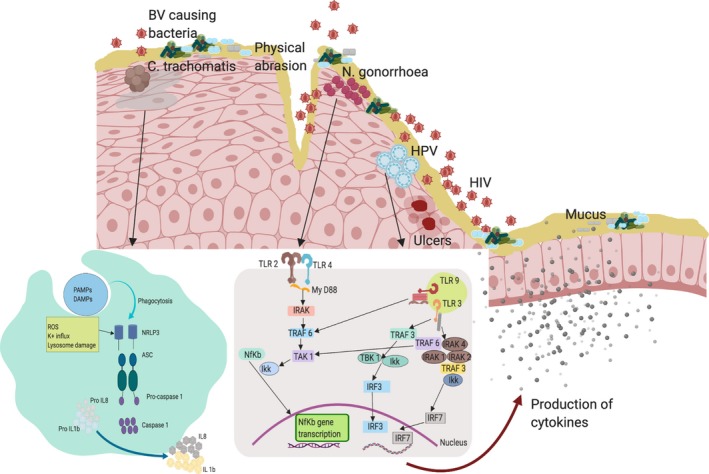Figure 1.

Mucosal innate immune responses to STIs in the female genital tract that could potentiate HIV transmission risk. Depicted are several of the modes through which STIs might increase the risk of HIV acquisition. Infection with STIs results to physical abrasion, ulcer formation and increase of pro‐inflammatory cytokines resulting in inflammation. Inflammation increases the availability of HIV target cells in the sub‐mucosa. During N. gonorrhoeae infection, TLR2 and 4 detect lipooligosaccharide and induce a NF‐KB driven immune response resulting to production of cytokines. Infection with C. trachomatis results in death of some cells which in turn produce elementary bodies. C. trachomatis infection is detected by inflammasomes resulting to production of IL‐1b and IL‐8 through the NLR3 pathway. TLR9 detects the CpG island in Genomic material of the HPV virus inducing an immune response through the MYD88 pathway. TLR3 detects the viral nucleic acid to induce an immune response through the IRF and IR7 pathways.
